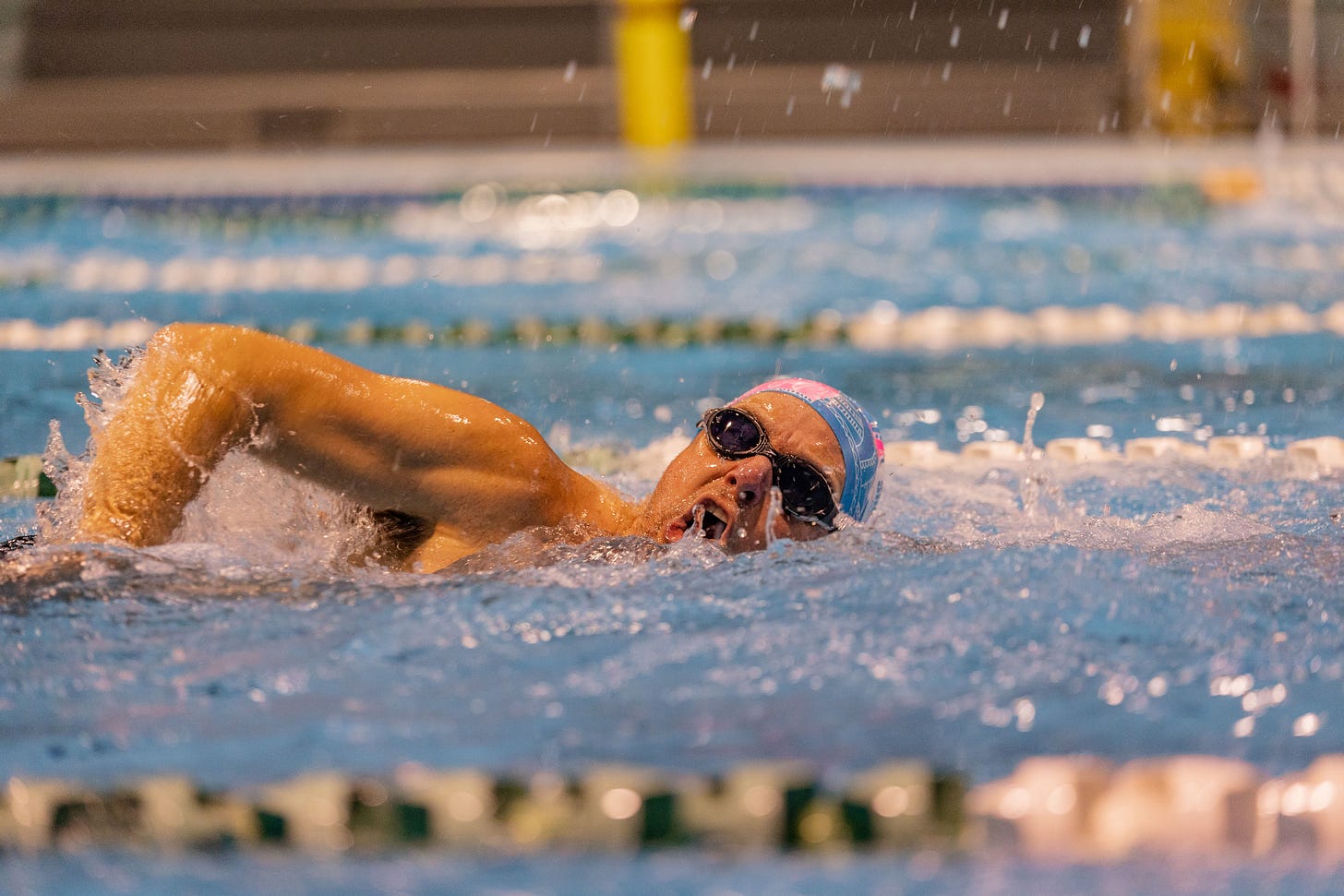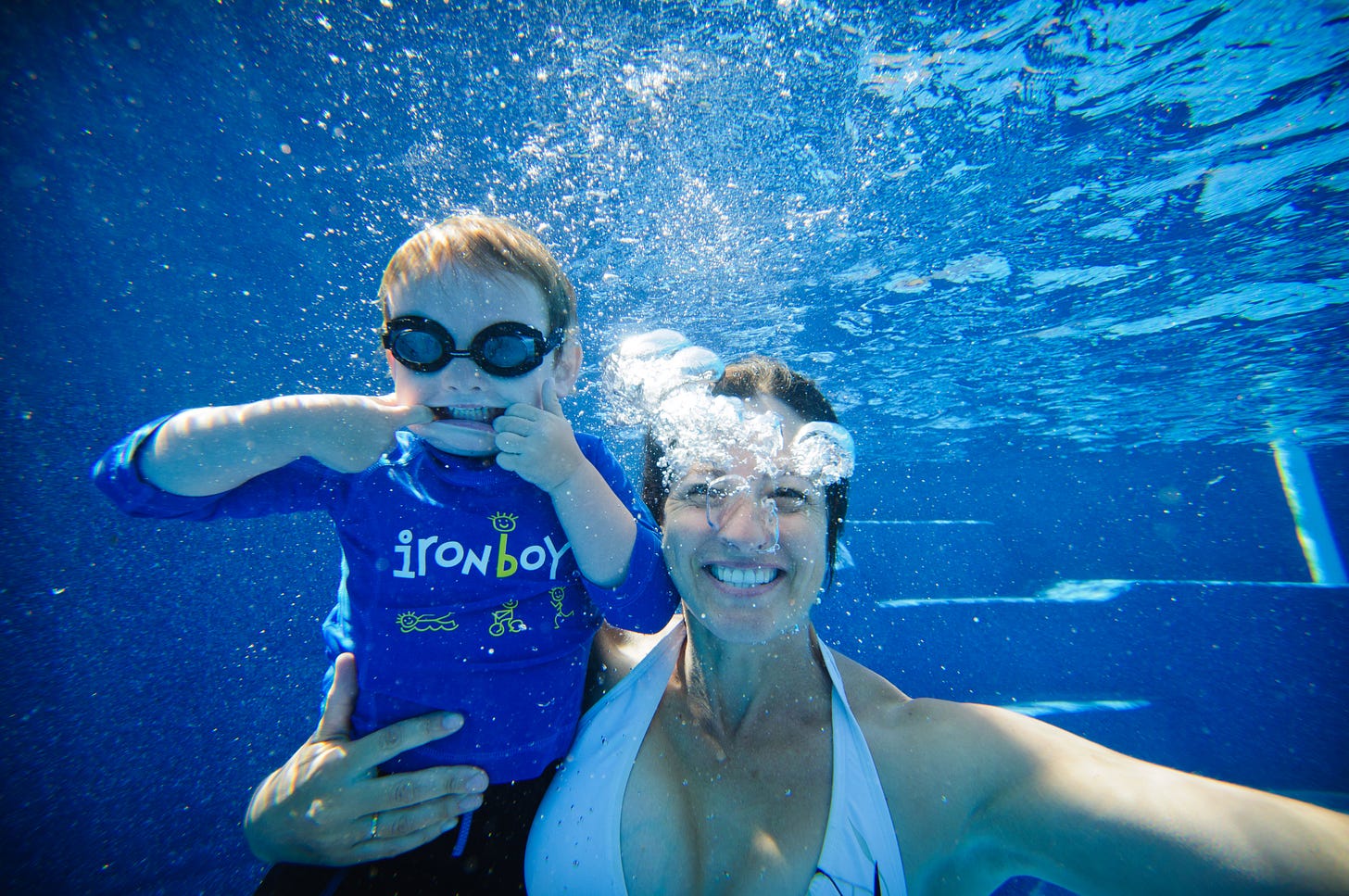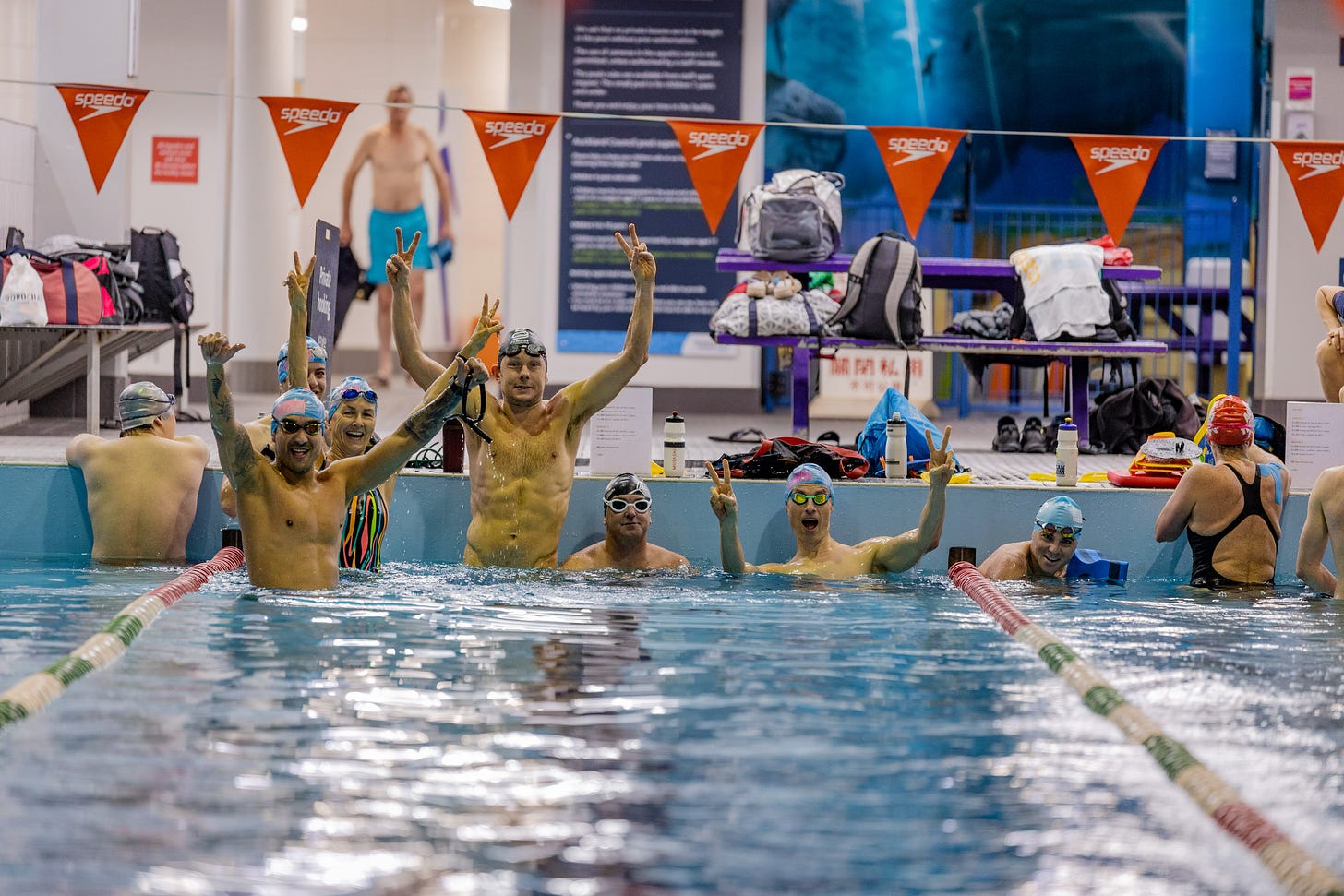5 Tips on How To Reduce Drag And Swim Faster
Reducing drag is the low-hanging fruit of swimming improvement. Let’s tick off the key culprits!
Hey Swimmers
Even though this topic is one we’ve covered to the nth degree over the years here on the Swim Smooth Blog, it’s one which commands attention and regular review, especially with the influx of new swimmers finding Swim Smooth for the first time recently following the launch of the Swim Smooth GURU on your Garmin device.
So, if you’ve just found us, welcome - it’s great to have you onboard! And if you’ve been around for a while now and feel you’ve heard all there is to know about reducing drag, please feel free to pass today’s blog onto a swim buddy who you think would benefit - you can either share it directly using this button:
…or consider gifting it to a mate this festive period:
So, one video that you might have missed on this topic is this one here - it was our most viewed video of 2023:

Reducing drag is one of the most effective ways to make swimming feel smoother and faster without working harder. Think of drag as resistance — it’s the water pushing back against your efforts, holding you back like an invisible force. The good news? Most causes of drag are fixable once you know what to look for.
Let’s use the Stroke Correction Hierarchy and tackle the most common sources of drag step by step.
1. Stop Holding Your Breath
If you’re holding onto air when your face is in the water, your chest becomes overly buoyant, causing your legs to sink like an anchor. This is drag 101! To fix this, focus on exhaling steadily through your nose or mouth when your face is underwater. Visualize a stream of bubbles. By exhaling fully, you’ll stay balanced and feel more comfortable breathing.
Quick Tip: Try humming underwater to encourage a steady exhale—it works wonders!
2. Fix Your Head Position

Your head controls the balance of your body in the water. If you lift your head too high to breathe or look forward too much, your hips and legs will sink, creating drag.
For most sinky-leg swimmers*, keep your head neutral, looking straight down at the bottom of the pool.
When you breathe, rotate your head smoothly to the side without lifting it. Think about breathing into your armpit rather than lifting towards the sky.
Visual Cue: Imagine a laser pointer on the top of your head pointing straight down the pool—keep it there!
*a head and eyes-down position is not for every swimmer! This article from March 2022 discusses when and why you might need to “go against the grain” in this regard.
3. Eliminate Cross-Over Hands
If your hands cross over the centerline of your body when entering the water, it causes you to snake side-to-side, which creates resistance primarily by causing the legs to scissor kick apart. To correct this:
Enter the water with your hand directly in front of your shoulder.
Visualize extending the middle finger forwards in front of the shoulder like it’s pointing your way forwards.
Bonus Benefit: Fixing cross-overs will also make your catch stronger—win-win!
4. Don’t Over-Glide

Many swimmers try to lengthen their stroke too much, thinking it makes them more efficient. Instead, over-gliding leads to dead spots where you lose momentum, sink slightly, and then need to overcome extra drag to regain speed.
Focus on a smooth, continuous rhythm. Think: “reach—catch—pull” without pausing at the front.
Use a slightly faster stroke rate to maintain flow and prevent sinking.
5. Improve Core Control
Poor core stability allows your hips and legs to wobble side-to-side, increasing drag. Engage your core muscles lightly (imagine holding your posture like a plank) to keep your body streamlined.
Avoid over-rotating your hips. Rotate just enough to allow a clean, efficient catch, ideally about 45-60º.
Use drills like 6-1-6 or Corpse Kick to practice core control.
Drag Checklist: Reduce It Step By Step
Here’s a quick checklist for identifying drag in your stroke:
Am I holding my breath instead of exhaling?
Is my head position neutral, with eyes looking straight down?
Are my hands crossing over at entry?
Am I gliding too long, creating dead spots?
Is my body stable, or am I snaking side-to-side?
Work through each point, one at a time, in your next swim session. Focus on small changes and build awareness of how your body moves through the water.
The Equation For Efficiency: Efficiency = Reduce Drag + Increase Effective Propulsion.
Fix the drag, and you’ll travel further on each stroke, swim faster, and use less energy. It’s the quickest path to feeling smooth in the water. Get started today!
Upcoming Swim Smooth Experiences for 2025
Dates:
Mallorca, Spain 1-7 June 2025
Herceg Novi, Montenegro 21-27 September 2025
Western Australia 9-19 November 2025
For more information and to book, please visit the website.
Keep reading with a 7-day free trial
Subscribe to Weekly Blog by Swim Smooth to keep reading this post and get 7 days of free access to the full post archives.








